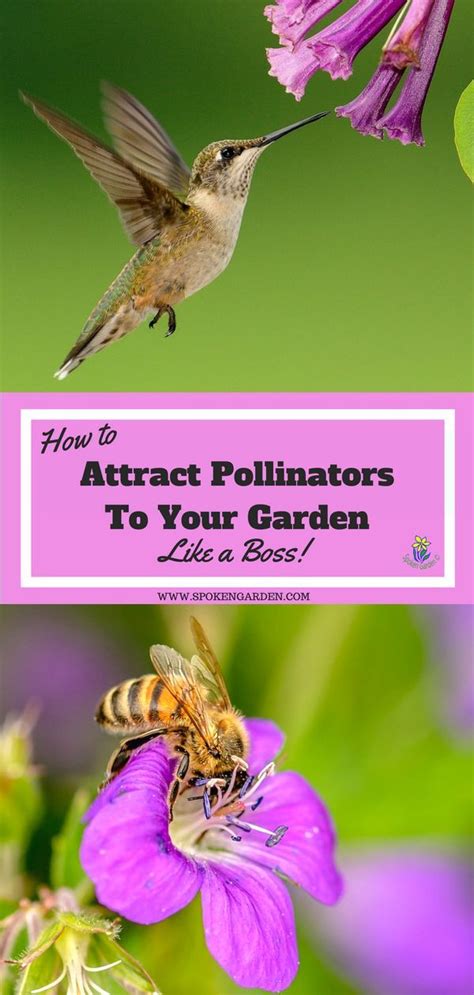Creating a Balcony Garden to Attract Pollinators for a Vibrant Urban Oasis
In urban settings, finding ways to support local ecosystems can be challenging due to limited space and resources. Balcony gardening offers a unique opportunity to contribute to biodiversity, attract pollinators, and create a lively environment even in the heart of a city. In this guide, we’ll explore practical tips on how to design, plant, and maintain a balcony garden that becomes a haven for bees, butterflies, and other pollinators. Whether you’re a beginner or an experienced gardener, this comprehensive guide will help you achieve a thriving pollinator-friendly balcony.
Key Concepts in Balcony Gardening for Pollinators
Before diving into the details of attracting pollinators to your balcony, it’s important to understand the basics of urban gardening and pollinator ecology. Here are some key concepts:
- Pollinators: These are animals, mainly insects like bees, butterflies, and beetles, that transfer pollen from one flower to another, helping plants reproduce.
- Urban Gardening: The practice of growing plants in small spaces within cities, such as balconies, rooftops, and window sills.
- Container Gardening: A method where plants are grown in pots or other containers instead of directly in the ground. This approach is ideal for small spaces.
- Biodiversity: Refers to the variety of life in a particular habitat. A diverse garden can support a wider range of pollinators.
- Nectar and Pollen Sources: Different plants produce varying amounts of nectar and pollen, which are food sources for pollinators. Choosing a variety of plants ensures year-round support for these creatures.
Historical Context: Evolution of Urban Gardening and Pollinator Conservation
The movement towards urban gardening and pollinator conservation has grown significantly over the past few decades. Traditionally, gardening was seen as a rural or suburban activity. However, with the rise of urbanization and the associated loss of natural habitats, people have started to recognize the importance of supporting local wildlife within cities.
In the 1970s, environmental awareness led to the establishment of “green spaces” in urban areas. The green living movement gained momentum, emphasizing sustainable practices such as organic gardening and reducing pesticide use. Over the years, scientific studies have highlighted the crucial role of pollinators in food production, leading to increased efforts to make urban areas more bee-friendly. Today, balcony gardens serve not only as personal retreats but also as small ecosystems that support the declining populations of pollinators.
Current State Analysis: Challenges and Opportunities in Urban Gardening
Creating a pollinator-friendly balcony garden poses certain challenges, such as limited space, exposure to city pollution, and lack of natural soil. However, these challenges also present opportunities for innovation in small space gardening. Below are some of the main challenges and potential solutions:
| Challenge | Proposed Solution |
|---|---|
| Limited space | Use vertical gardening techniques and stackable containers to maximize growing area. |
| Pollution and limited access to sunlight | Choose resilient, shade-tolerant plants and consider using air-purifying plants like ferns and peace lilies. |
| Attracting diverse pollinators | Plant a mix of flowers with varying bloom times, colors, and shapes to support different species. |
| Lack of soil nutrients | Use high-quality potting mixes and organic fertilizers to enrich container soil. |
Practical Applications: Tips for Creating a Pollinator-Friendly Balcony Garden
To design a successful balcony garden that attracts pollinators, follow these essential tips:
- Choose Pollinator-Friendly Plants: Select a variety of bee-friendly and butterfly-attracting plants, such as lavender, echinacea, and marigolds. Native plants are especially beneficial because they are well adapted to the local climate and attract native pollinators.
- Plant in Clusters: Group similar plants together. Clustering flowers of the same species helps pollinators find food more easily.
- Provide Water Sources: A small dish of water with pebbles for perching can serve as a water source for pollinators. Ensure the water is changed regularly to avoid attracting pests.
- Use Organic Methods: Avoid chemical pesticides and herbicides, which can harm pollinators. Opt for natural alternatives like neem oil or insecticidal soap.
- Incorporate Vertical Elements: Use trellises, hanging baskets, and wall-mounted planters to make the most of vertical space.
- Consider Bloom Timing: Plant a mix of early, mid, and late-blooming flowers to ensure there is always something in bloom for pollinators.
Case Studies: Successful Balcony Gardens Around the World
Numerous city dwellers have successfully transformed their balconies into thriving pollinator habitats. Here are a few examples:
| Location | Description |
|---|---|
| New York, USA | A gardener used native plants such as goldenrod and milkweed, attracting monarch butterflies and honeybees to their 8th-floor balcony. |
| London, UK | An urban beekeeper set up a small hive on their rooftop garden, with pollinator-friendly herbs like thyme, oregano, and borage supporting the bees. |
| Sydney, Australia | A container garden with a variety of native flowering plants attracted native Australian bees, providing crucial pollination services to nearby gardens. |
| Tokyo, Japan | Using a mix of annuals and perennials, a gardener created a continuously blooming environment, attracting butterflies and hoverflies throughout the year. |
Stakeholder Analysis: Who Benefits from Pollinator-Friendly Balcony Gardens?
Creating a balcony garden that attracts pollinators benefits multiple stakeholders, including:
- Homeowners and Renters: Gain a peaceful green space and potentially higher property value.
- Pollinators: Benefit from new food and water sources in urban areas.
- Community: Enhances local biodiversity and contributes to environmental sustainability.
- Local Governments: Encourages eco-friendly initiatives and can help cities achieve sustainability goals.
Implementation Guidelines: Steps to Create Your Pollinator-Friendly Balcony Garden
Follow these steps to create a pollinator-friendly balcony garden:
- Plan Your Space: Evaluate the sunlight, wind exposure, and space constraints. Sketch a layout to organize where each plant and element will go.
- Select Suitable Plants: Choose pollinator-attracting flowers, herbs, and shrubs based on your climate and space conditions.
- Prepare Containers and Soil: Use containers with proper drainage holes and fill them with a high-quality potting mix. Avoid garden soil as it may not drain well.
- Position Your Plants: Place sun-loving plants in the sunniest spots and shade-tolerant plants in shaded areas.
- Water and Fertilize Regularly: Maintain a consistent watering schedule and use organic fertilizers to support plant growth.
- Monitor for Pests: Regularly check your plants for signs of pests and use natural pest control methods when needed.
Ethical Considerations in Balcony Gardening
There are ethical implications to consider when creating a balcony garden that attracts pollinators. Using non-native plants could inadvertently harm local ecosystems if they become invasive. Furthermore, the overuse of water and fertilizers in urban settings could contribute to resource wastage and pollution. Ethical gardeners should:
- Prioritize native and non-invasive species.
- Use sustainable practices, such as collecting rainwater for irrigation.
- Avoid the use of synthetic chemicals that could harm wildlife.
Limitations and Future Research
While balcony gardening offers numerous benefits, there are limitations to what can be achieved in small urban spaces. For example, balconies may not provide sufficient space for certain pollinator species, such as larger bees or birds. Future research could focus on:
- Innovative container designs that maximize space efficiency.
- New techniques for incorporating vertical greenery into urban gardening.
- Studying the long-term impacts of pollinator-friendly balcony gardens on urban biodiversity.
Expert Commentary
Experts in urban ecology and sustainable living agree that balcony gardens are a valuable tool in promoting biodiversity in cities. According to Dr. Jane Thompson, a specialist in urban ecology, “Creating small habitats like balcony gardens can have a cumulative impact on urban environments, offering much-needed support to pollinators.” Additionally, landscape designer Mark Brown emphasizes that “innovative garden designs that utilize vertical space can transform even the smallest balconies into productive ecosystems.”


